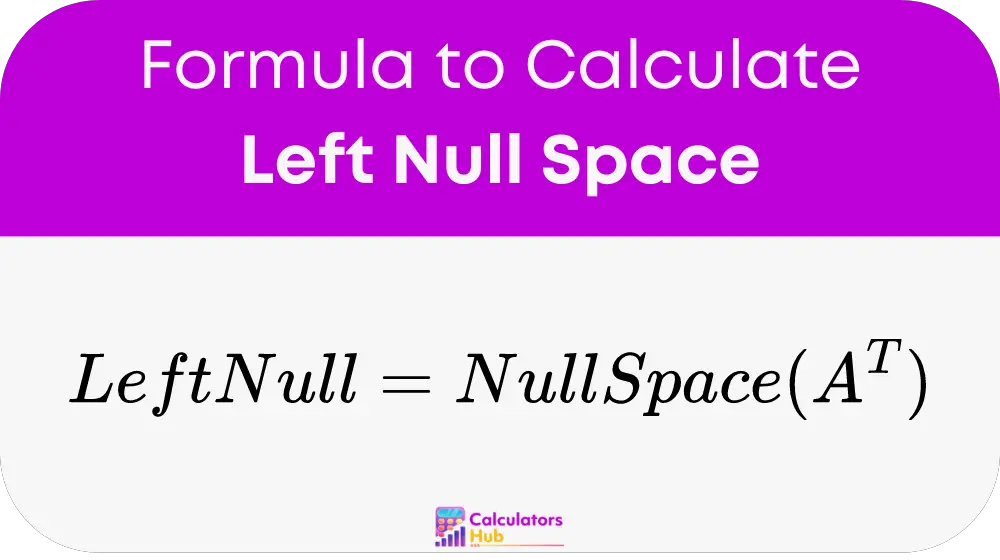Left null space, a lesser-known sibling of the more commonly discussed null space, is critical for analyzing the solvability of linear systems and studying the properties of linear transformations. This calculator not only simplifies the computation of left null space but also enhances understanding by providing visual and numerical feedback on matrix manipulations. It is particularly useful in applications involving sparse matrices, where traditional methods may falter.
Formula of Left Null Space Calculator
To use the Left Null Space Calculator effectively, one should know the formula:

Where:
- A is the matrix for calculation.
- A^T is the transpose of A.
This formula is pivotal for understanding how the calculator processes the matrix to compute results.
Table of Common Terms and Calculations
Below is a reference table for common terms and calculations related to the Left Null Space Calculator:
| Term | Description |
|---|---|
| Left Null Space | Set of vectors that when multiplied by A^T result in the zero vector |
| Matrix Transpose | Matrix obtained by switching rows and columns of A |
Example of Left Null Space Calculator
Given Matrix A:
A = [1 3 2 6]
Step 1: Calculate the Transpose of A (A^T):
A^T = [1 2 3 6]
Step 2: Set Up and Solve the Equations for the Null Space of A^T:
The system of equations derived from A^T * v = 0 is:
1v1 + 2v2 = 0
3v1 + 6v2 = 0
Both equations reduce to:
v1 + 2*v2 = 0
Setting v2 = 1 for simplicity, we find v1 = -2.
Solution Vector:
The vector [-2, 1] is in the null space of A^T, hence it is in the left null space of A.
This vector confirms that when multiplied by A^T, it results in the zero vector, which demonstrates it belongs to the left null space of A.
Most Common FAQs
Null space includes vectors that nullify the original matrix, whereas left null space involves vectors that nullify the matrix transpose.
It finds applications in systems engineering and statistical analysis, where matrix models are crucial.
It is very efficient but might require manual checks in complex or unusual matrix configurations.
